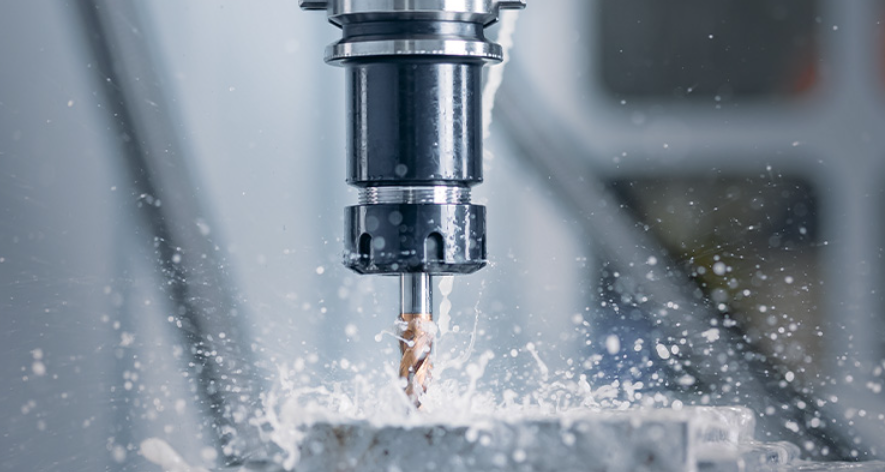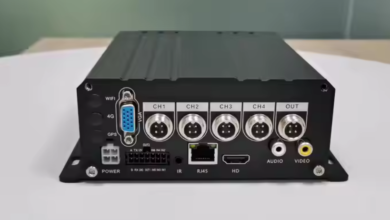
The Silent Integration: How Data is Forging the Future of Precision Manufacturing
We live in an era defined by the buzzwords of Big Tech: Artificial Intelligence, the Internet of Things, and Big Data. We picture server farms and Silicon Valley campuses. But the most profound technological revolution is happening in a place often considered traditional: the factory floor. The convergence of Big Tech and advanced manufacturing isn’t a future concept; it’s a present-day reality quietly reshaping how we build the physical world, from the simplest component to the most complex machine.
At the heart of this transformation lies a fundamental shift. A modern machining parts manufacturer is no longer just a workshop of lathes and mills. It has evolved into a data-generating engine, where every cut, every rotation, and every micron of tolerance tells a story.
From Coolant to Cloud: The Datafication of the Machine Shop
The transformation from a traditional workshop to a digitally integrated production cell is akin to the evolution from a manual typewriter to a cloud-connected computer. The physical act of machining—the removal of material with a cutting tool—remains the core function. However, it is now enveloped in a rich, invisible layer of data that governs, monitors, and optimizes every aspect of the process. Imagine a high-precision machining parts manufacturer operating today: as a Swiss-type lathe machines a complex medical implant, it is no longer a standalone island of production. Instead, it functions as a node in a vast Industrial Internet of Things (IIoT) network. A symphony of sensors embedded within the machine captures a continuous stream of metadata in real-time. This goes beyond simple position and speed coordinates. Advanced systems monitor spindle torque with extreme sensitivity, detecting minute fluctuations that signal the onset of tool wear long before it affects part quality. Thermocouples track thermal growth of the machine structure, allowing the control system to make micro-compensations, ensuring dimensional stability over long production runs. Vibration analysis sensors act as a stethoscope, diagnosing the health of bearings and guide bushes, predicting maintenance needs proactively to avoid unplanned downtime.
This raw data stream is the new lifeblood of manufacturing. It is aggregated by edge computing devices at the machine, which perform initial data processing to reduce latency and bandwidth load. Critical insights are then transmitted to cloud-based platforms, where they are stored, contextualized, and analyzed. Here, sophisticated algorithms parse through terabytes of historical and real-time data, identifying patterns invisible to the human eye. They can auto-correct tool paths to compensate for tool deflection, adjust feed rates for hard-to-machine materials, and flag potential deviations from tolerance windows—all in near real-time. This seamless flow of information, from the physical spline shaft machining process to the digital cloud and back again, creates a closed-loop system of continuous improvement. The factory floor, once dominated by the roar of machinery and the smell of coolant, is now equally a landscape of silent, flowing data, where every cut is a data point and every finished part is a validated dataset.
See also: Maximizing Your Home’s Curb Appeal with Simple Upgrades
AI and the Pursuit of Perfection in Complex Geometries
The application of Artificial Intelligence in machining represents a paradigm shift from reactive problem-solving to predictive optimization, particularly when dealing with complex geometries that push the boundaries of physics. Components like spline shafts, gears, and turbocharger impellers are not merely challenging due to their intricate shapes; they are susceptible to microscopic variations that can lead to catastrophic failure under load. Traditional CNC programming follows a predetermined, static set of instructions. While precise, it cannot adapt to the dynamic, real-world conditions of the machining environment. This is where AI and Machine Learning (ML) enter the fray, transforming the capabilities of a leading machining parts manufacturer.
Consider the nuanced process of spline shaft machining. The cutting tools involved are subjected to immense and varying forces. A conventional program might run until a tool breaks, leading to scrapped parts and production delays. An AI-driven system, however, is different. ML models are trained on vast datasets encompassing tool life, material properties, and historical machine performance. These models can predict the exact point at which a tool will begin to degrade. More impressively, they can dynamically adjust the machining parameters—such as spindle speed, feed rate, and depth of cut—in real-time to extend that tool’s life while maintaining supreme surface finish and dimensional integrity. This is not a simple adjustment; it’s a complex, multi-variable optimization that happens autonomously.
Furthermore, AI excels in generative design and process optimization. When tasked with producing a new, lightweight aerospace component, an AI system can simulate thousands of iterations of the spline shaft machining strategy. It can learn which tool paths minimize vibration (chatter), which sequences reduce stress concentration, and how to achieve the required tolerances in the most time-efficient manner. This capability allows a company like Falcon CNC Swiss to tackle prototypes and high-volume production runs with equal confidence, knowing that the manufacturing process itself has been optimized by an intelligence that has “learned” from countless previous operations. The result is a level of perfection that transcends mere consistency. It’s about achieving a state of manufacturing grace, where every component is not just within print but is produced in the most robust, efficient, and reliable way possible, unlocking new frontiers in design and performance that were previously considered unmanufacturable
The Human Element: Engineers as Data Orchestrators
This technological shift does not render human expertise obsolete; it elevates it. The role of the manufacturing engineer is transforming from machine operator to data orchestrator. Their skill set now includes interpreting data dashboards, understanding algorithmic recommendations, and managing a hybrid physical-digital workflow.
The most successful manufacturers are those who empower their teams with these tools. They understand that the value of a machining parts manufacturer in the 21st century is as much in its data infrastructure as it is in its physical assets. The ability to translate a CAD file into a flawless physical part, guided by a stream of intelligent data, is the new competitive moat.
Conclusion: The Physical World as a Software Problem
The convergence of Big Tech and advanced manufacturing signifies a monumental change: we are beginning to treat the creation of physical objects as a software problem. By applying the principles of data science, connectivity, and intelligence to the machining process, we are entering an age of unprecedented quality, efficiency, and innovation.
The companies leading this charge, those who have integrated these silent, data-driven technologies into their core operations, are setting the new global standard. They are not just making parts; they are building the verified, data-backed components that will form the backbone of tomorrow’s autonomous vehicles, advanced robotics, and space exploration gear. The future of manufacturing is here, and it is written in code and measured in microns.




